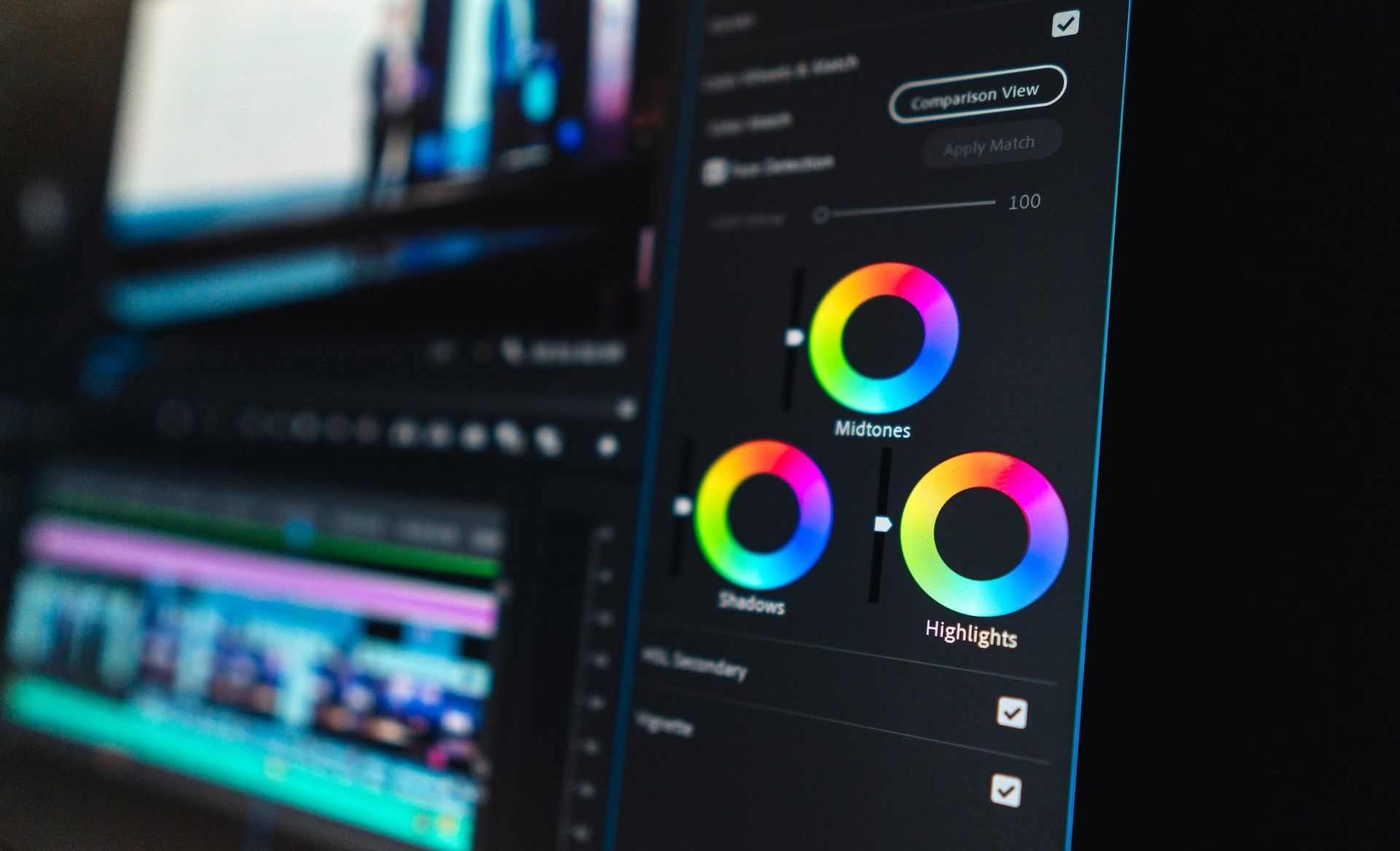A Beginner’s Guide to Making Professional Videos at Home
Video-making tips for your content on YouTube, social media, website and more.

The world we live in today is increasingly reliant on digital media, and video content has emerged as a crucial component of marketing strategies for businesses and individuals alike. Whether you're looking to promote your brand on social media, create online courses or tutorials, or simply connect with your audience in a more engaging way, video is an incredibly powerful tool for conveying your message effectively.
However, the prospect of producing professional-quality videos can seem daunting, especially if you're working with limited resources or experience. The good news is that with a few basic tools and techniques, you can create high-quality videos from the comfort of your own home.
In this article, we'll guide you through the process of creating professional videos at home, from initial planning to post-production. We'll explore what you can do to elevate your videos to the next level and provide tips and tricks for maximizing the impact of your content. By the end of this article, you'll have the confidence and skills you need to create compelling video content that engages your audience and helps you achieve your goals.
What are professional videos?
Before we dive into the details, let's first understand what professional videos are. Professional videos are videos that are produced with high-quality equipment, techniques, and post-production editing that result in a polished and engaging final product. These videos can be used for a variety of purposes, including marketing, education, entertainment, and more.
1. Research and plan ahead

Professional video creation starts long before you press the record button on your camera. The first step in any successful video production is planning.
It’s important to begin by identifying your target audience and their interests. This will help you to tailor your content to their specific needs and preferences.
Once you have a clear understanding of your audience, you should define your message and goal for the video. What do you want your audience to take away from the video? What action do you want them to take after watching it?
Research and gathering relevant information and resources is also crucial. This will help you to ensure that your video is accurate, informative, and engaging. You should also create a detailed script or outline for your video. This will help you to stay organized and focused during the production process.
Finally, you should plan your shooting locations and schedule. This way help you can ensure that you have all the necessary resources and equipment in place when you begin filming. By following these tips, you can create a professional video that effectively communicates your message to your target audience.
2. Write a video script

When it comes to scriptwriting, simplicity is key. Use conversational language and break down complex ideas into digestible concepts to keep your audience engaged.
Storytelling techniques can be a powerful tool to capture your audience's attention and keep them interested in your content. And if appropriate for your topic and audience, humor can be an effective way to add some levity to your script.
But always be mindful of potential offense or misinterpretation. Make sure your humor is appropriate and won't alienate any of your viewers. And don't forget to keep your script within the target video length to ensure your audience stays engaged from beginning to end.
3. Prepare the setting

Background
The importance of creating a professional background for your video cannot be overstated. A well-thought-out background can add depth and dimension to your video, while a cluttered or distracting background can detract from your message. To create a clean and professional background, consider using a solid-colored backdrop or a minimalistic setting. This will help to keep the focus on you and your message.
Additionally, avoiding distracting elements in the background, such as posters, can help to create a more polished and professional look. So, take the time to carefully consider your video background and create a setting that will enhance the overall quality of your content.
Lighting
Another critical element in creating a professional video is lighting. Proper lighting can make a significant difference in the quality of your video. One of the most important things to keep in mind is to use bright, natural light whenever possible. This helps to avoid harsh shadows and glare, which can be distracting and unappealing to viewers.
In order to create a warm and inviting atmosphere, it's important to use soft lighting. This can be achieved by using diffusers or other types of light modifiers that help to spread the light evenly and create a more flattering look.
For a truly professional look, consider investing in a ring light or other types of lighting equipment that can help to create a more polished and refined appearance. With the right lighting, you can take your video content to the next level and create something truly outstanding.
3. Compose your frames

Composing frames can make all the difference between a mediocre video and a truly stunning one. Follow the rule of thirds – this simple technique involves dividing your frame into thirds both vertically and horizontally and then placing your subject at one of the intersections. This creates a more balanced and visually interesting composition that draws the viewer's eye in and keeps them engaged.
Another key factor in creating visually interesting frames is the use of different angles. By varying your camera's position and perspective, you can add variety and interest to your video. Whether you are shooting from a high angle, a low angle, or a tilted angle, each viewpoint can offer a unique perspective that can add depth and complexity to your video.
Close-up shots are another powerful tool in your framing arsenal. By zooming in on important details, you can highlight specific elements of your subject and draw the viewer's attention to them. This can be particularly effective when you want to showcase a specific product or feature, or when you want to capture an emotional moment in a more intimate way.
Don't be afraid to experiment with panning and zooming techniques to create a dynamic and engaging video. By moving the camera around your subject or zooming in and out, you can create a sense of movement and energy that can add excitement and drama to your video.
4. Practice your camera presence

If you are going to be in the shot, having strong camera presence is crucial. Pay attention to the way you speak, the tone of your voice, and the pace at which you speak. By practicing and refining these elements, you can ensure that your message comes across clearly and effectively.
But it's not just about what you say – it's also about how you present yourself visually. Using natural and relaxed body language can help you appear more approachable and relatable on camera. This can include practicing your posture, using hand gestures to emphasize key points, or simply smiling and nodding at appropriate moments.
Of course, one of the most important aspects of camera presence is making eye contact with the camera. This can be challenging, especially if you're not used to being on camera. However, by focusing on the lens and imagining that you're speaking directly to your audience, you can create a more personal connection with your viewers.
Last but not least, it's essential to be confident and enthusiastic. This doesn't mean being over-the-top or fake but rather finding a balance between professionalism and approachability. By exuding confidence and energy, you can capture your audience's attention and keep them engaged throughout your video.
5. Mind the audio quality

When it comes to creating a video, the audio quality is just as important as the visual elements. You need the audio that sounds crisp and clear to ensure that your message is conveyed effectively. Don’t rely on the microphone that’s built into your camera. While it picks up sound, the quality of audio recorded with internal camera microphone is always very poor. All external microphones are better than any camera’s cheaply-made internal ones.
If you’re planning to record videos on a regular basis, you should consider investing into a good mic like Røde NT1-A ($299), Shure SM7B ($359) and Electro-Voice RE20 ($499). There are also many budget options available on the market, such as Blue Snowball Ice ($39.99) and JLab Talk ($69.99).
But even the best mic can easily pick up extraneous sounds like plosives and background noise. You can fix this issues after recording with a noise cancelling software like LALAL.AI Voice Cleaner. Upload your video or audio recording into the service and you will receive a track in the same format and quality but without the distracting sounds.
Another way to ensure top-notch quality of both audio and video you record is to use Waveroom, a virtual recording studio that captures video in 1080p resolution and records uncompressed 48 kHz audio. Since everything is recorded locally (meaning, right on your computer, not in browser), even unstable internet connection won’t affect the quality.
In addition, incorporating music and sound effects can help to enhance the mood and tone of your video. This can help to create a more immersive experience for the viewer and keep them engaged. However, it's important to make sure that the volume levels are consistent throughout the video for a smooth and enjoyable listening and viewing experience.
6. Adjust the camera settings

In order to elevate the quality of your videos and take your videography skills to the next level, there are a few key camera settings that you should always keep in mind. Firstly, you need adjust the exposure which will help you achieve proper lighting in your shots.
Secondly, using a shallow depth of field can add a professional touch to your videos by creating a blurred background effect that draws attention to your subject. Then adjust the white balance to ensure that colors are accurately represented in your footage. Finally, using a high frame rate can help you capture smoother motion and action shots, giving your videos a more dynamic and engaging feel.
7. Keep post-production simple

While it can be tempting to use all the bells and whistles of your editing software, sometimes less is more, so stick to basic editing techniques. Focus on trimming and cutting your footage to create a clear and concise story. This will help keep your viewers engaged and prevent them from getting lost in unnecessary details.
Use color correction enhance the mood and tone of your video, it gives a more professional look and feel. Experiment with different color grading and correction techniques to find the perfect style for your video.
Fade-ins and fade-outs can help to smoothly transition between scenes. In addition, cuts and dissolves can create a visual break between shots allowing the viewer to process the information before moving on to the next scene. For added variety, try incorporating different types of transitions such as wipes or zooms.
Adding music and sound effects can also significantly enhance your video's impact. Choose music and sound effects that fit the tone and style of your video, and don't overdo it. Sometimes silence can be just as effective in creating an emotional impact.
Keep your video length within your target time frame. Most viewers have short attention spans and you don't want to lose their interest by dragging out your video. Break up longer videos into shorter segments or use time-lapse footage to speed up certain sections.
Follow Waveroom on Twitter, Facebook and Reddit to get more useful tips on recording videos, podcasts, interviews, group meetings, lessons, and corporate communications.
